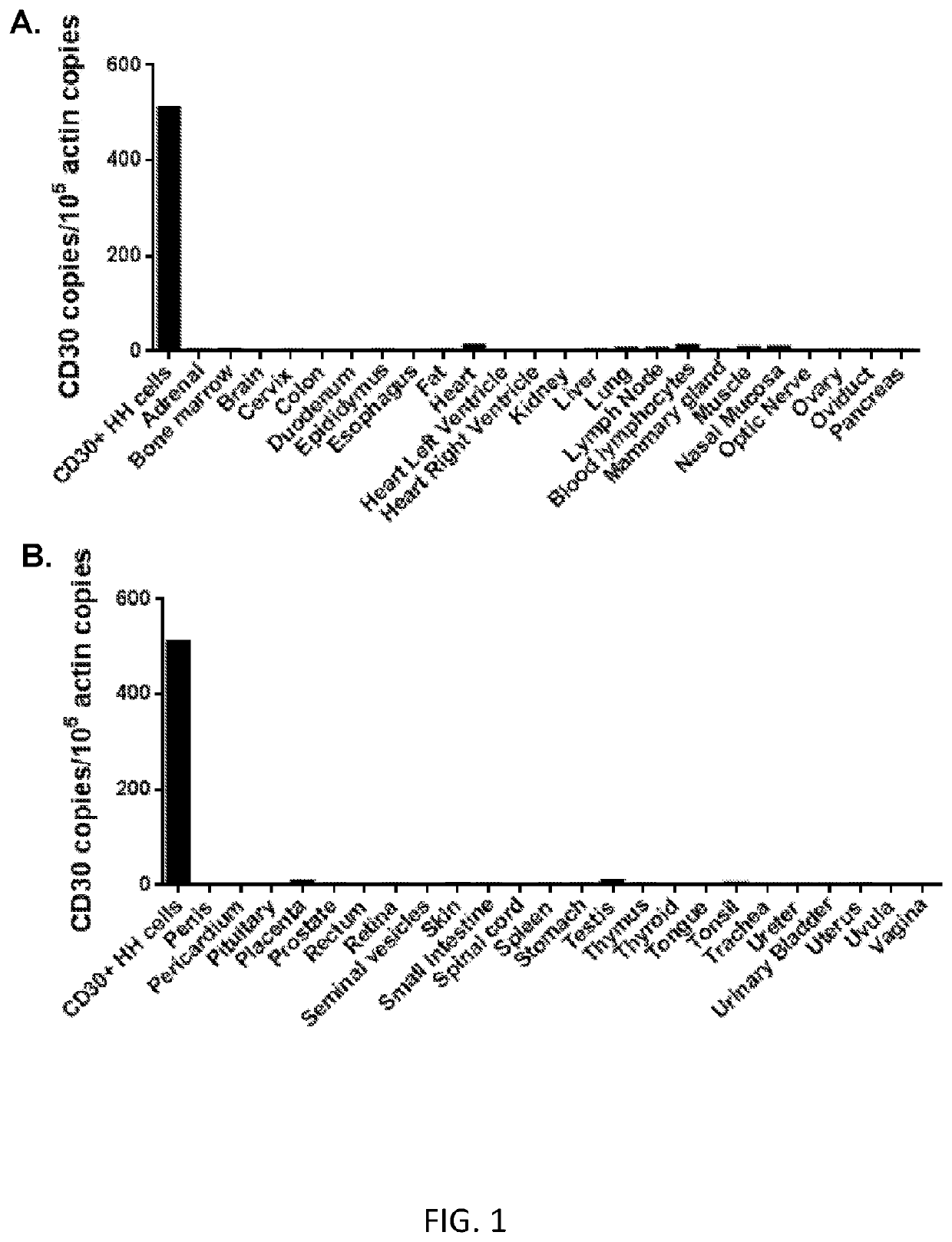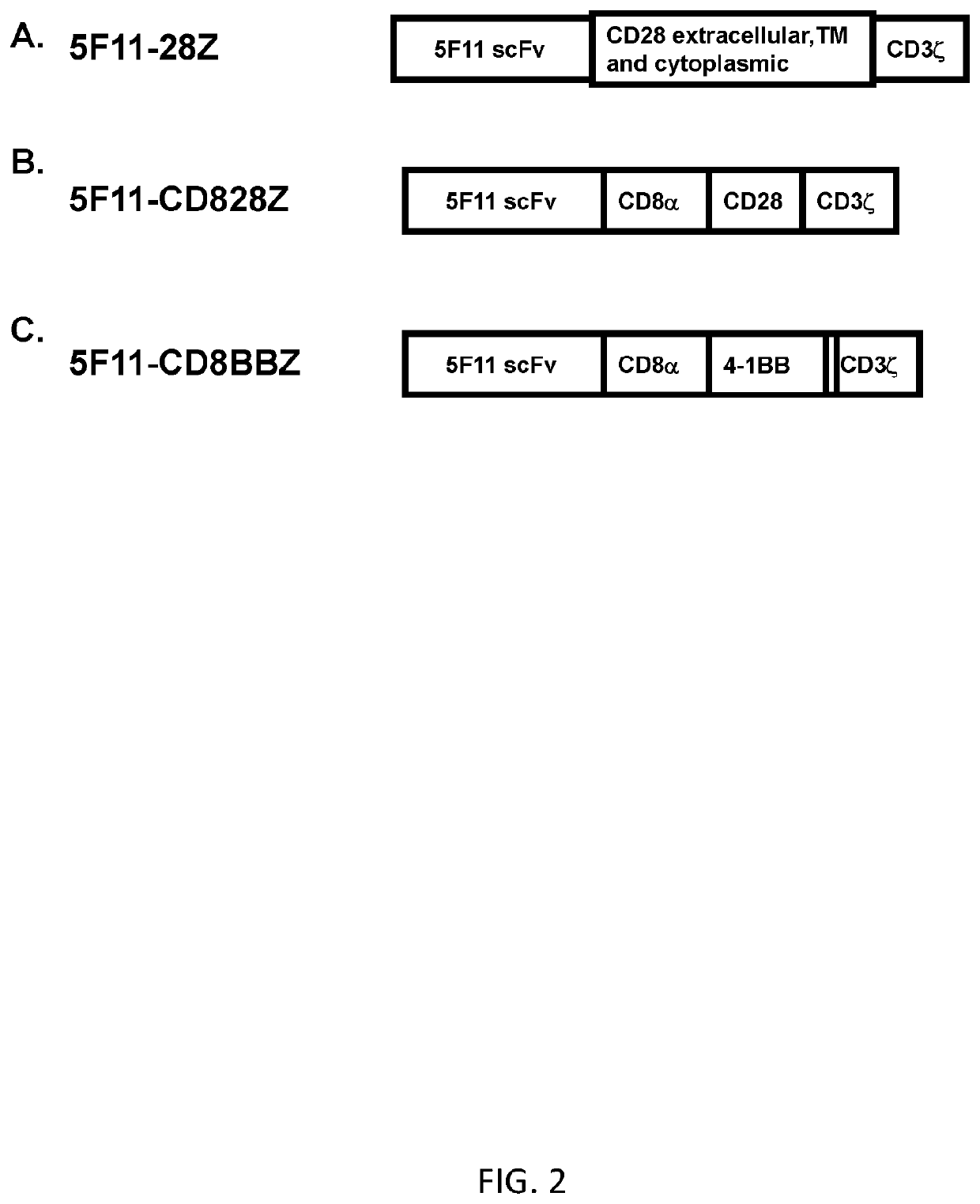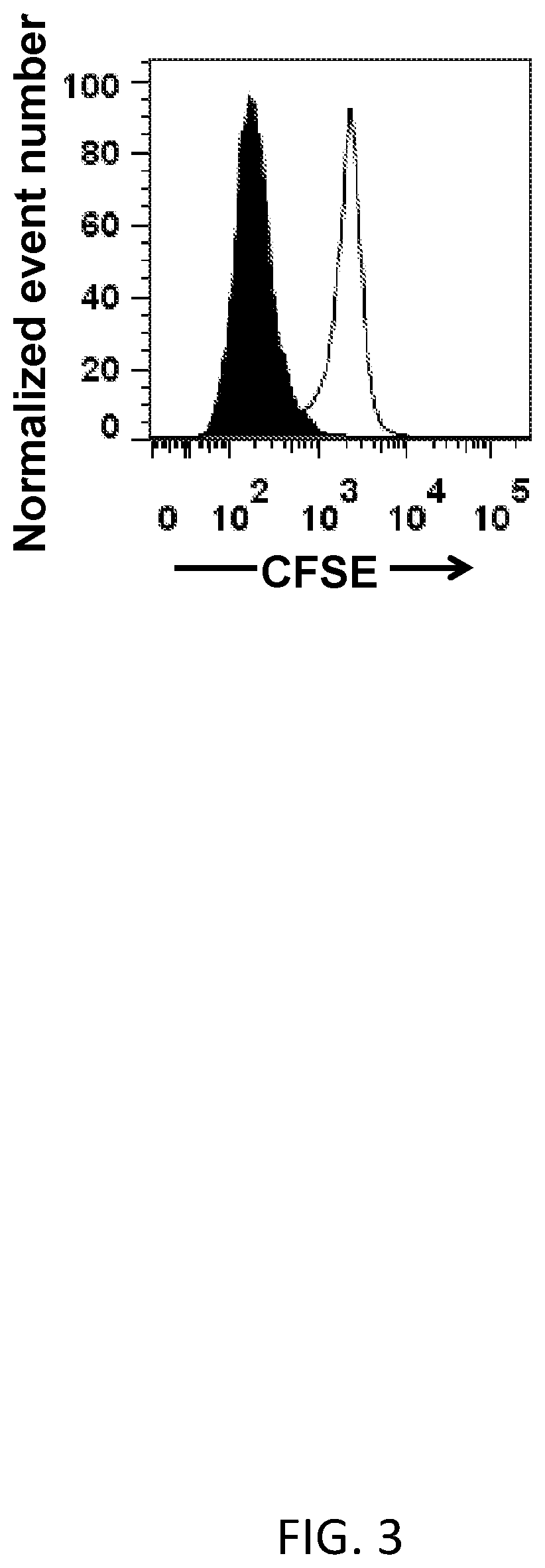Anti-CD30 chimeric antigen receptors
a technology of chimeric antigen receptors and anti-cd30, which is applied in the direction of antibody medical ingredients, drug compositions, peptides, etc., can solve the problems of poor prognosis of many cancers, including lymphoma, and achieve the effect of improving the prognosis
- Summary
- Abstract
- Description
- Claims
- Application Information
AI Technical Summary
Benefits of technology
Problems solved by technology
Method used
Image
Examples
example 1
[0104]This example demonstrates that CD30 RNA was absent or expressed at very low levels in normal human tissues.
[0105]An analysis of CD30 expression was performed by qPCR on a panel of cDNA samples that were prepared from the RNA of 48 normal human tissues (FIGS. 1A and 1B). The results showed that CD30 was absent or expressed at very low levels in normal human tissues. These qPCR results were in agreement with extensive prior immunohistochemistry work performed by other investigators (Schwarting et al., Blood, 74(5): 1678-1689 (1989); Ito et al., American J. Pathol., 145(2): 276-280 (1994); Falini et al., Blood, 85(1): 1-14 (1995)). Notably, the few organs that had low levels of CD30 RNA expression detected by qPCR were negative for CD30 by immununohistochemistry in experiments performed by other investigators (Schwarting et al., Blood, 74(5): 1678-1689 (1989); Ito et al., American J. Pathol., 145(2): 276-280 (1994); Falini et al., Blood, 85(1): 1-14 (1995)). This prior immunohist...
example 2
[0106]This example demonstrates the presence or absence of CD30 expression on the surface of cell lines, primary human CDD34+ cells, and primary human peripheral blood mononuclear cells.
[0107]Other investigators have detected CD30 on the surface of several different types of lymphoma including Hodgkin lymphoma, anaplastic large cell lymphoma, some B-cell lymphomas, and several types of T-cell lymphomas (Stein et al., Blood, 66(4): 848-858 (1985); Schwarting et al., Blood, 74(5): 1678-1689 (1989); Falini et al., Blood, 85(1): 1-14 (1995)). CD30 expression was assayed on the surface of a series of cell lines by flow cytometry. It was found that some cell lines, such as the HH lymphoma cell line, expressed high levels of CD30. Some other cell lines, such as the COL0205 cell line, did not express CD30. The ngfr-bv173 cell line did not express CD30. The CD30-bv173 cell line (which was transduced to express CD30) did express CD30. CD30 expression was also assessed on primary human CDD34+ ...
example 3
[0108]This example demonstrates the T-cell surface expression of CARs, each CAR incorporating one of the scFvs derived from the 5F11, AC10, and the XmAb2513 antibodies.
[0109]CARs were generated incorporating one of each of 4 different anti-CD30 single-chain variable fragments (scFvs). These scFvs were derived from 4 different monoclonal antibodies, 17G1, 5F11, AC10, and XmAb2513. A CAR incorporating the 17G1-derived scFv was not expressed at high levels on T cells and was not studied extensively. CARs incorporating scFvs derived from one of each of the 5F11, AC10, and the XmAb2513 antibodies were studied extensively in vitro. To evaluate the different scFvs, a CAR design with hinge, TM and cytoplasmic regions from the CD28 costimulatory molecule and a CD3ζ T-cell activation molecule at the C-terminus was used.
[0110]First, T-cell surface expression of CARs incorporating scFvs from one of each of the 5F11, AC10, and XmAb2513 antibodies was compared by flow cytometry. Human T cells wer...
PUM
| Property | Measurement | Unit |
|---|---|---|
| temperatures | aaaaa | aaaaa |
| time | aaaaa | aaaaa |
| concentration | aaaaa | aaaaa |
Abstract
Description
Claims
Application Information
 Login to View More
Login to View More - R&D
- Intellectual Property
- Life Sciences
- Materials
- Tech Scout
- Unparalleled Data Quality
- Higher Quality Content
- 60% Fewer Hallucinations
Browse by: Latest US Patents, China's latest patents, Technical Efficacy Thesaurus, Application Domain, Technology Topic, Popular Technical Reports.
© 2025 PatSnap. All rights reserved.Legal|Privacy policy|Modern Slavery Act Transparency Statement|Sitemap|About US| Contact US: help@patsnap.com



